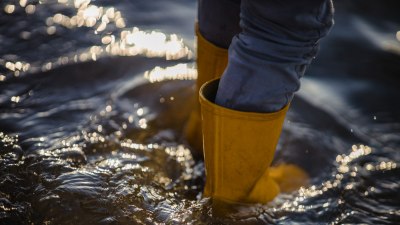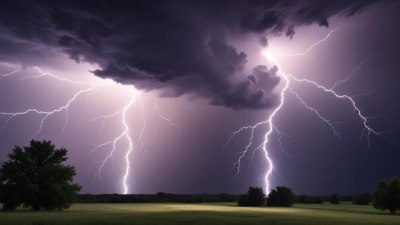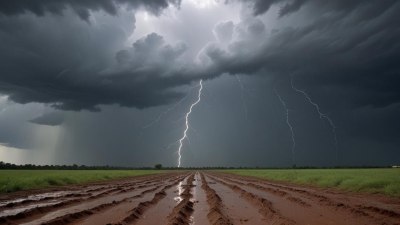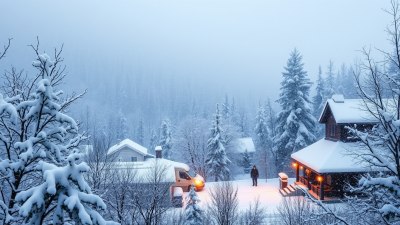The Fastest Forming Storms Ever Recorded
Explore the incredible speed of the fastest forming storms recorded in history.
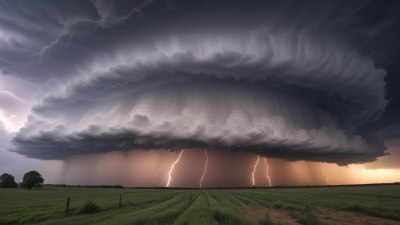
This image was created with the assistance of Freepik
Storms are an extraordinary manifestation of nature's power, showcasing the dynamic processes within our atmosphere. Among these storms, some have gained notoriety for their rapid inception and formation. In this article, we will explore the fastest forming storms ever recorded, delving into the science that drives their emergence and the implications they have on humanity.
Understanding Storm Formation
Storms generally arise due to various atmospheric conditions, including temperature differences, humidity, and pressure variations. The formation process starts when warm, moist air begins to rise, a phenomenon commonly known as convection. As this air ascends, it cools and condenses, forming clouds. If the conditions are right, these clouds can rapidly evolve into severe storms.
Defining Fast Forming Storms
Fast forming storms typically refer to those that develop from initial cloud formation to a fully-fledged storm in a significantly short timeframe, often within a few hours. This rapid development can lead to severe weather events, including heavy rainfall, thunderstorms, tornadoes, and hurricanes. Meteorologists utilize satellite data and radar technology to track storm formation, helping communities prepare and respond to these fast-acting weather events.
Examples of Fast Forming Storms
Throughout meteorological history, several storms have exemplified the ability to form rapidly, causing substantial impacts across various regions.
The Palm Sunday Tornado Outbreak of 1965
One of the most notable instances of fast forming storms is the Palm Sunday tornado outbreak, which occurred on April 11, 1965. Within a single afternoon, 48 tornadoes struck parts of the Midwest, including Illinois, Indiana, and Ohio. This outbreak was characterized by its swift formation as conditions turned favorable in a matter of hours. The devastation resulted in 256 fatalities and extensive property damage, showcasing the potential destruction of such rapidly forming storms.
Hurricane Harvey: Rapid Intensification
Another significant example of fast storm formation is Hurricane Harvey, which formed in August 2017. Initially, Harvey began as a weak tropical storm in the Atlantic, but drastic changes in environmental conditions led to its rapid intensification. Within just 48 hours, Harvey transformed into a Category 4 hurricane. This rapid development was largely responsible for the catastrophic flooding that ensued, particularly in Houston, Texas, where rainfall exceeded 50 inches.
Supercell Thunderstorms
Supercell thunderstorms represent a specific type of fast forming storm. These storms are defined by their rotating nature and can produce severe weather phenomena, including large hail, damaging winds, and tornadoes. Supercells can develop quickly under suitable atmospheric conditions, sometimes forming in under an hour. Their ability to grow rapidly makes them one of the most dangerous types of storms.
Rapidly Forming Coastal Storms
Coastal areas are particularly vulnerable to rapidly forming storms, such as nor'easters. These weather systems often emerge suddenly, causing significant impacts in a short period. They can produce intense snowfall or heavy rainfall, leading to flooding and hazardous conditions. One notable instance was the nor'easter that hit the Northeastern United States in March 2018, which intensified unexpectedly, leading to severe winter weather in many states.
The Role of Climate Change
The phenomenon of rapidly forming storms is becoming increasingly relevant in discussions around climate change. Changes in sea surface temperatures and increased atmospheric moisture are thought to contribute to the intensification and formation rates of storms. Warmer oceans provide more energy, leading to quicker storm development and more extreme weather events. This presents challenges for forecasting and preparedness.
The Importance of Early Warning Systems
As fast forming storms pose significant risks, the implementation of effective early warning systems is crucial. Meteorologists rely on advanced technologies, such as satellite imagery and Doppler radar, to monitor atmospheric conditions. Additionally, public education campaigns aim to inform communities about storm preparedness and safety measures. Rapid dissemination of information can save lives and minimize property damage.
The fastest forming storms serve as a stark reminder of nature's unpredictable power. From tornado outbreaks to hurricanes and thunderstorms, these weather phenomena develop with astonishing speed, often resulting in severe impacts. Understanding the science behind storm formation and the role of climate change enhances our preparedness for these rapid events. As technology continues to advance, our ability to predict and respond to fast forming storms will improve, ultimately helping to safeguard communities.

